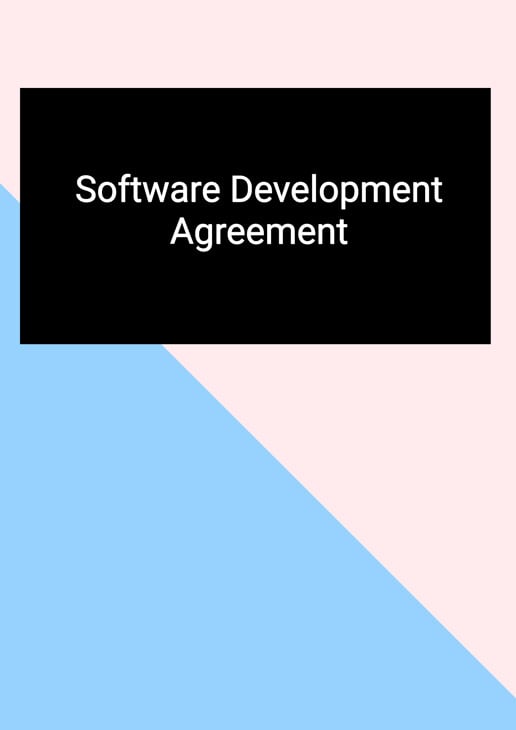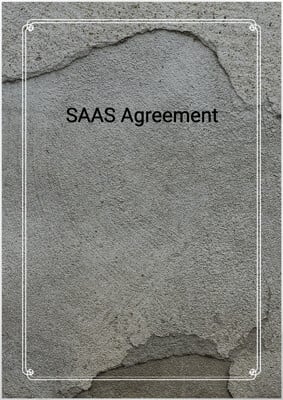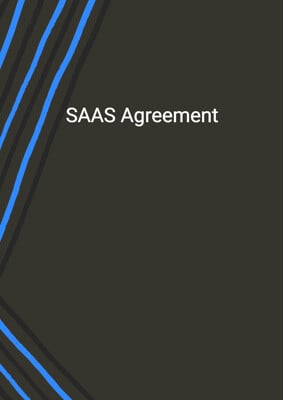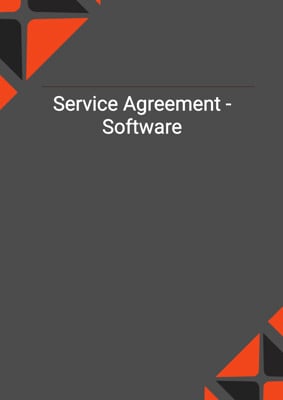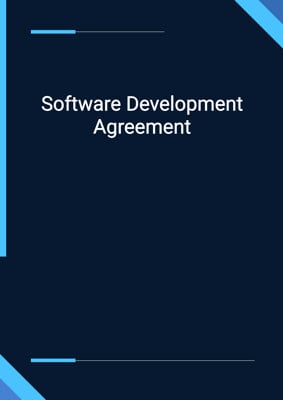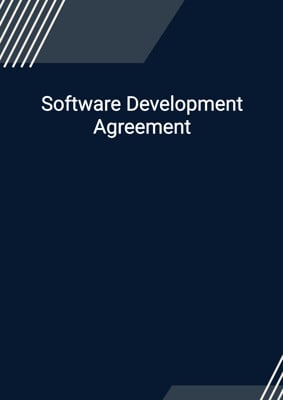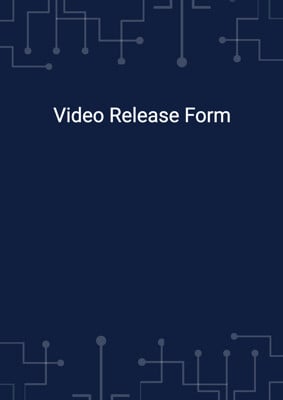How to Tailor the Document for Your Need?
01
Create Document
Fill in the details of the parties. You can click the "Fill with Member’s Information" button to complete it with information saved to your account.
02
Fill Information
Please fill in any additional information by following the step-by-step guide on the left hand side of the preview document and click the "Next" button.
03
Get Document
When you are done, click the "Get Document" button and you can download the document in Word or PDF format.
04
Review Document
Please get all parties to review the document carefully and make any final modifications to ensure that the details are correct before signing the document.
Document Preview
Document Description
The Software Development Agreement is a legally binding document that outlines the terms and conditions between the Developer and the Buyer for the development of software. This agreement is important as it establishes the roles and responsibilities of both parties and ensures that the software development process is carried out smoothly.
The entire document is divided into several sections, each addressing different aspects of the agreement. The first section, 'Description of Services,' outlines the Developer's role as an independent contractor to design, develop, and implement the software according to the terms of the agreement. It also emphasizes the importance of outlining specifications, timelines, and expectations in Schedule 1 to ensure enforceability and accuracy.
The second section, 'Change in Specifications,' allows the Buyer to request changes to the specifications or other aspects of the agreement. The Developer is required to implement these changes without additional expense or delay, unless it would significantly impact the delivery of the software.
The third section, 'Further Development,' states that any future upgrades, modifications, or projects beyond the maintenance of the current software will require a new agreement and negotiation of fees.
The fourth section, 'Compensation,' specifies the total fee to be paid by the Buyer for software development and maintenance. It also outlines the invoicing process and terms of payment, including penalties for late payments.
The fifth section, 'Term,' establishes the duration of the agreement, which extends beyond the final delivery date of the software to allow for maintenance.
The sixth section, 'Termination,' outlines the circumstances under which the agreement may be terminated, such as default by either party or bankruptcy. It also states that the ownership of the software and confidentiality provisions will survive termination.
The seventh section, 'Performance and Acceptance Testing,' highlights the importance of acceptance testing at each key stage of software development. The Buyer is responsible for testing the software according to the specifications and communicating any issues to the Developer for resolution.
The eighth section, 'Ownership of Software,' states that the software developed under this agreement is the sole property of the Buyer. The Developer assigns all rights, title, and interest in the software to the Buyer and agrees to assist in obtaining legal protection for the software.
The ninth section, 'Developer's Obligations,' outlines the Developer's responsibilities, including compliance with directions, laws, and regulations, and the use of reasonable care and diligence. It also includes provisions for security and third-party consents.
The tenth section, 'Buyer's Obligations,' states that the Buyer must assist with software development and obtain necessary consents in relation to data. The Buyer is responsible for the propriety, confidentiality, and use of any data maintained on its computer system.
The eleventh section, 'Warranties,' includes a warranty from the Developer that the software does not infringe on any third-party copyright. It also excludes other warranties and limits the Developer's liability.
The twelfth section, 'Independent Contractor,' clarifies that the Developer is acting as an independent contractor and not an employee or agent of the Buyer. It also allows the Buyer to observe and monitor the Developer's performance.
The thirteenth section, 'Confidentiality,' emphasizes the importance of keeping all material and information supplied by the Buyer confidential. The Developer agrees not to disclose such information to third parties without the Buyer's permission.
The fourteenth section, 'Training,' states that the Developer shall provide training consultations and a user's manual to the Buyer. Support services may also be provided upon request.
The fifteenth section, 'No Waiver,' clarifies that the failure to enforce any provision of the agreement does not waive the right to enforce it in the future.
The sixteenth section, 'Severability,' states that the invalidity or unenforceability of any provision does not affect the validity of the remaining provisions.
The seventeenth section, 'Assignment,' prohibits the parties from assigning their rights and obligations under the agreement without the other party's consent.
The eighteenth section, 'Entire Agreement,' confirms that the agreement contains the entire understanding between the parties and supersedes any prior agreements.
The nineteenth section, 'Governing Law and Jurisdiction,' encourages the parties to resolve any disputes amicably. If a dispute arises, the parties agree to negotiate in good faith. The agreement is governed by the laws of the relevant jurisdiction.
The twentieth section, 'Dispute Resolution,' outlines the process for resolving disputes through negotiation between representatives of each party.
The twenty-first section, 'Headings,' clarifies that the headings in the agreement are for reference purposes only.
The twenty-second section, 'Counterparts; Facsimile and Electronic Signatures,' allows the agreement to be executed in counterparts and acknowledges the validity of electronic signatures.
The twenty-third section, 'Notices,' specifies the methods and timing of delivering notices between the parties.
How to use this document?
1. Outline specifications and expectations: Work together to outline the specifications of the software, including timelines and deliverables, in Schedule 1. Ensure that the specifications are detailed and accurate to avoid any misunderstandings.
2. Request changes if necessary: If there is a need to change the specifications or other aspects of the agreement, make a request to the Developer. The Developer will make best efforts to implement the changes without additional expense or delay.
3. Consider further development: If there are plans for future upgrades or modifications beyond the maintenance of the current software, a new agreement will be required. Negotiate the fees and ensure the availability of the Developer and/or their personnel for such work.
4. Ensure timely payment: Adhere to the payment schedule outlined in Schedule 2. Payments should be made within the specified timeframe to avoid penalties.
5. Conduct acceptance testing: Test the software according to the specifications outlined in the agreement. Communicate any issues that arise during acceptance testing to the Developer for resolution.
6. Protect ownership of software: Understand that the software developed under this agreement belongs to the Buyer. Ensure that the Developer includes the Buyer's copyright notice in all versions of the software.
7. Comply with obligations: Both parties should comply with their respective obligations under the agreement. The Developer should perform their obligations with care, skill, and diligence, while the Buyer should assist with software development and obtain necessary consents.
8. Maintain confidentiality: Keep all material and information supplied by the Buyer confidential. Do not disclose such information to third parties without the Buyer's permission.
9. Seek training and support: Take advantage of the training consultations and user's manual provided by the Developer. Request support services if needed to ensure continued use of the software.
10. Resolve disputes amicably: In case of a dispute, attempt to resolve it through negotiation in good faith. If necessary, seek legal advice or consider alternative dispute resolution methods.
11. Stay updated on legal requirements: Stay informed about applicable laws and regulations related to software development and data privacy. Ensure compliance with these requirements throughout the agreement.
12. Keep records and documentation: Maintain adequate and current records related to the software development. These records may be necessary for legal protection and enforcement of rights.
13. Communicate effectively: Maintain open and clear communication with the Developer to address any issues or concerns that may arise during the software development process.
14. Review and understand the agreement: Familiarize yourself with the terms and conditions of the agreement. Seek legal advice if needed to ensure a thorough understanding of your rights and obligations.
15. Adhere to notice requirements: Follow the specified methods and timing for delivering notices between the parties. Keep track of important dates and deadlines mentioned in the agreement.
Not the right document?
Don’t worry, we have thousands of documents for you to choose from:
